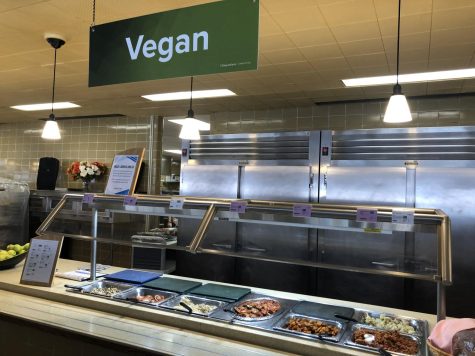A College Student’s Guide to Grocery Shopping on a Budget
Buying on a budget doesn’t mean you have to sacrifice health or flavor
College was the first time I was grocery shopping and cooking for myself. I had no idea what “good” prices were for produce, or milk, chicken, etc. I grew up in a home where my mom had enough food in the house to feed an army at all times. I had no idea how to meal plan, what went into preparing 3 meals a day for myself and didn’t have any sort of gage on what was considered expensive or inexpensive. Being a soon-to-be graduate of college, and after years of shopping and cooking for myself, I bring to you the ultimate college student guide to grocery shopping on a budget.
- Choose the right grocery store
The two most affordable grocery stores in Amherst are Aldi and Trader Joe’s. I myself prefer Trader Joe’s, just because I know what I like there, and they have such delicious and nutritious foods for a really great price. No matter where you are living, it’s beneficial to do some research and compare prices at different grocery stores to see if you are shopping at the most affordable location. You may see plenty of deals at Stop & Shop that make it seem like you’re saving money, when in reality these “discounted prices” are still more expensive than normal prices at another store.
2. Look high and low… literally
Typically, grocery stores place the most profitable items at eye level. This is because you are more likely to buy products directly in front of you. But to find the most affordable option, look higher or lower on the shelves. This is usually where grocery stores keep off-brand and discounted products that are less expensive. And speaking of off brand-products…
3. Buy off-brand!
Yes, it can be so tempting, and it might even feel more “trustworthy” to buy name-brand products, like Nestle’s, Heinz, etc. But for every name brand product, there is usually an identical off-brand option for a much more affordable price. Read the ingredients label and compare brands. Typically, the off-brand item contains the exact same ingredients and nutrition label as the name-brand option. The same goes for medicine, toiletries, etc. Stop fearing the off-brand!
4. Buy in bulk
Buying in bulk can save you so much money. Here is an example: Say you like eating yogurt for breakfast, so you buy seven, 5oz yogurt cups, one for every day of the week. This would cost you about $13.00 at Stop & Shop. But, say instead, you bought a 35oz tub of that yogurt for $6.50. This would be the same amount of yogurt for about half the price, and half the fridge space. Other foods that are good to buy in bulk are rice, eggs, and frozen fruits and vegetables. Along with buying frozen fruits and vegetables in bulk, buying frozen foods, in general, can help you save a lot of money. These foods last so much longer than fresh foods, and have the same, if not more nutrients than their fresh counterparts. And another way to eat and shop affordably is to freeze foods that may go bad. This will save you from having to throw away a lot of food you’ve bought. This is especially good for when you go home for breaks.
5. Simplify your meals, and utilize spices
Shopping on a budget does not mean you need to sacrifice flavor or fullness. The key to shopping affordably and still eating delicious, nutritious meals is to choose simple foods that have so much flavor on their own, and also to utilize spices. Garlic powder, red chili flakes, Italian seasoning, basil, cayenne pepper, and paprika are the ones I use most. Also, spices are packed with nutrients which adds to the nutritional value of your meal. One example of a simple meal that is still so tasty would be fajitas. Wheat tortillas (which you could freeze to last longer), ground turkey cooked in a packet of taco seasoning (which costs under $1.00 and can be used on multiple occasions) a few cooked peppers and an onion, some premade guac and salsa is a nutritionally dense meal, that will leave you full and satisfied without breaking your wallet.
Shopping affordably does not need to alter the way you eat, and it’s an opportunity to get creative! When I start to run low on food, I like to make different meals out of what I have left in my pantry, like using frozen fruit and a ripened banana to make myself a smoothie bowl or using the last few tortillas and some cheese and store-bought red sauce to make mini pizzas. I think one misconception in the health field is that in order to eat healthily, you need to buy expensive powders and seeds and cleanses. But health is as simple and affordable as eating apples and bananas. Shopping on a budget brings you back to the basics, and allows you to get creative and learn new ways to eat your favorite foods.
Email Madison at [email protected]













